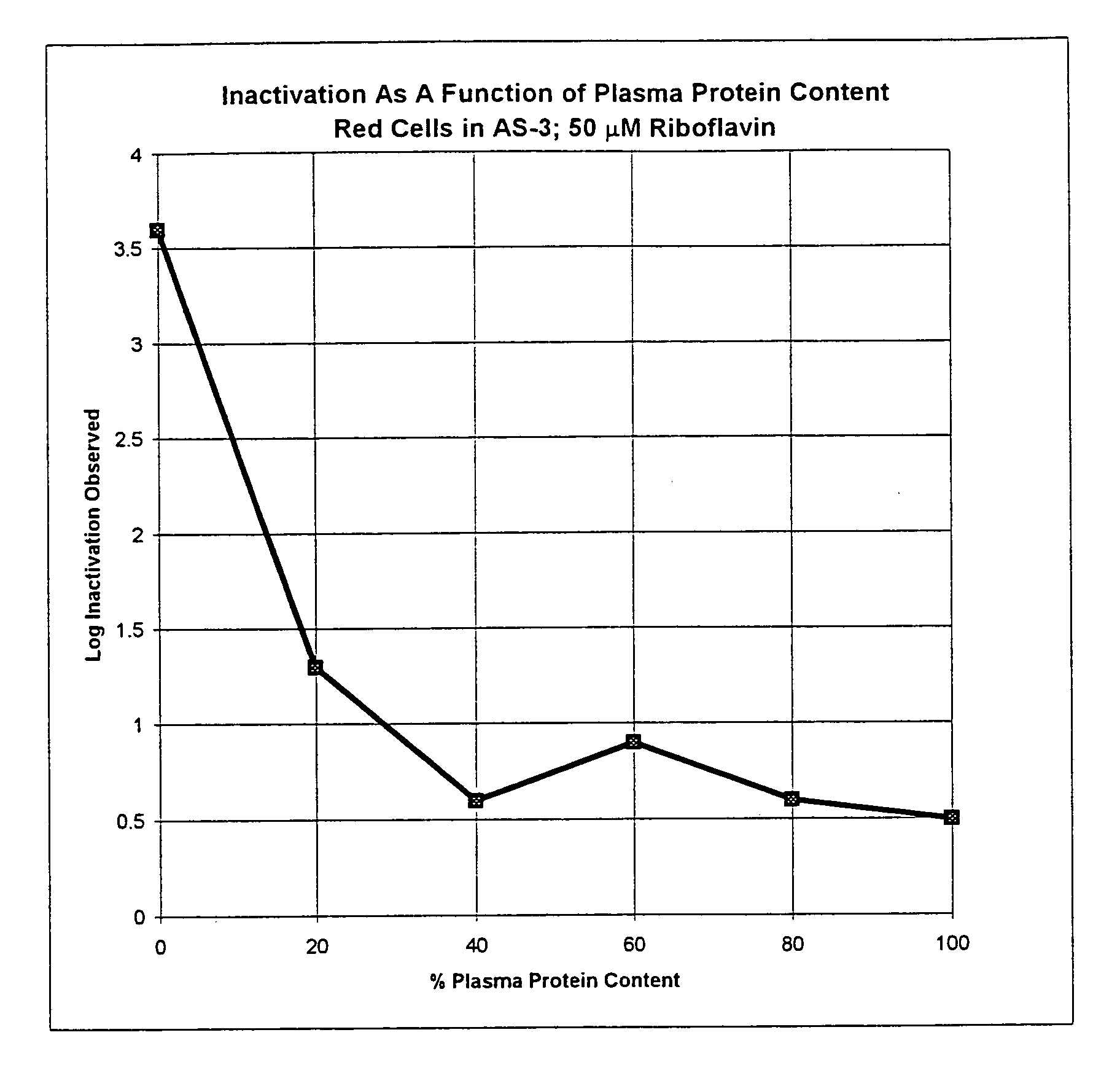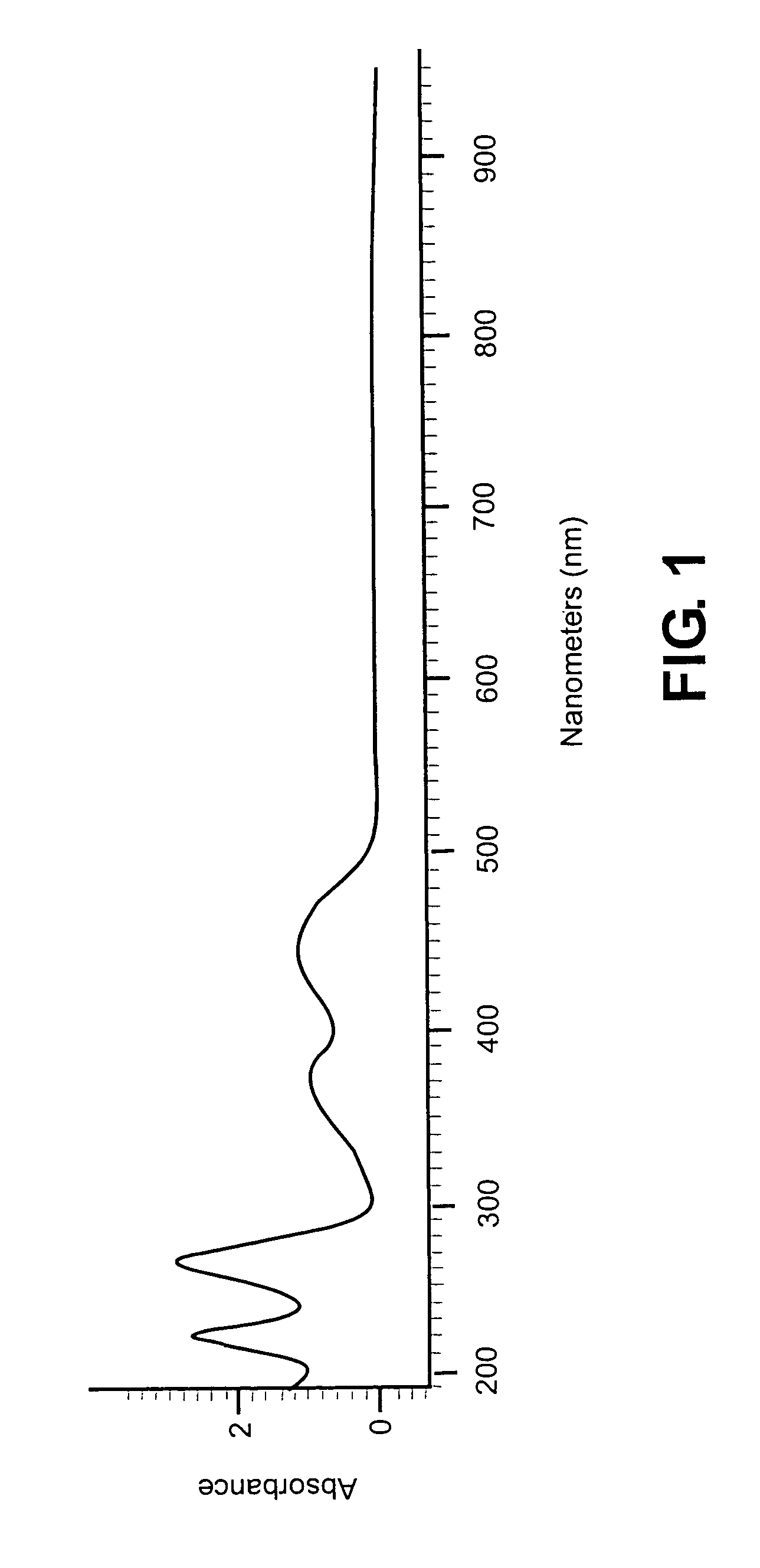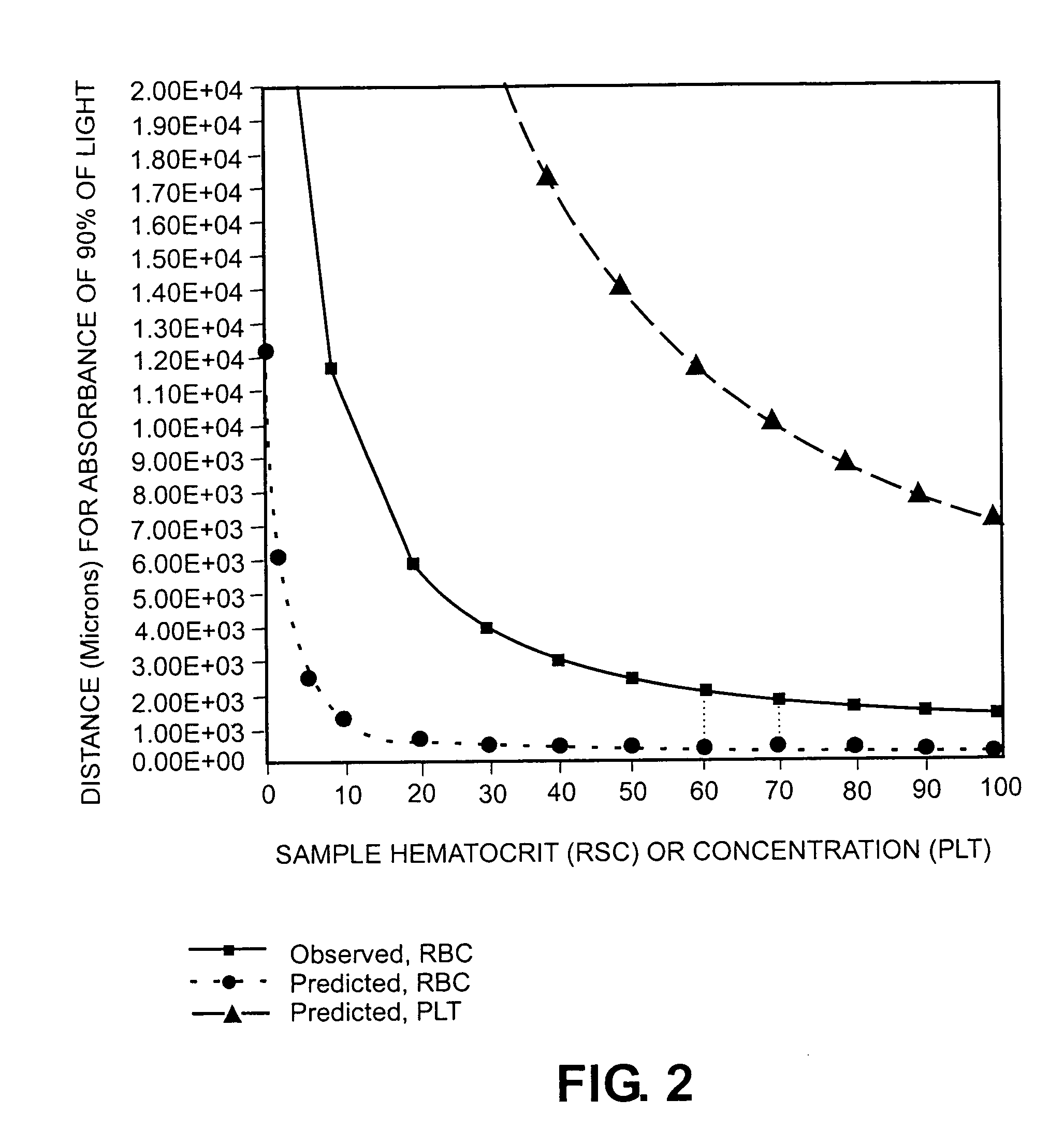Method and apparatus for inactivation of biological contaminants using photosensitizers
a biological contaminants and photosensitizer technology, applied in the field of biological contaminants inactivation using photosensitizers, can solve the problems of inability to use methods, blood supply contamination contaminating blood supplies with infectious microorganisms such as hiv, hepatitis and other viruses and bacteria, so as to improve the inactivation of microorganisms and minimize damage desired fluid components
- Summary
- Abstract
- Description
- Claims
- Application Information
AI Technical Summary
Benefits of technology
Problems solved by technology
Method used
Image
Examples
example 1
Absorbance Profile of 7,8-dimethyl-10-ribityl isoalloxazine
[0171]A sample of 7,8-dimethyl-10-ribityl isoalloxazine (98% purity) was obtained from Sigma Chemical Company. A portion of this sample was submitted for analysis using a scanning UV spectrophotometer. The range studied covered the region of 200 to 900 nm. For analysis, the sample was dissolved in distilled water. A sample spectrum from this analysis is shown in FIG. 1.
[0172]Results were consistent with those reported in the literature for the absorbance maxima and extinction coefficients for 7,8-dimethyl-10-ribityl isoalloxazine
[0173]
Literature λmax (ε)Measured λmax (ε)267 (32,359)222 (30,965)265 (33,159)373 (10,471)373 (10,568)447 (12,303)445 (12,466)
[0174]Appropriate wavelengths for irradiation are 373 and 445 nm. The extinction coefficients observed at these absorbance maxima is sufficient to ensure adequate activation of the sensitizer in solution.
example 2
Solubility of 7,8-dimethyl-10-ribityl isoalloxazine
Solubility in Isolyte S, pH 7.4 Media
[0175]The maximum solubility of 7,8-dimethyl-10-ribityl isoalloxazine in Isolyte S media was determined as follows:
[0176]7,8-dimethyl-10-ribityl isoalloxazine was mixed with Isolyte S until a precipitate was formed. The mixture was agitated at room temperature for one hour and vortex mixed to ensure complete dissolution of the suspended material. Additional 7,8-dimethyl-10-ribityl isoalloxazine was added until a solid suspension remained despite additional vortex mixing. This suspension was then centrifuged to remove undissolved material. The supernatant from this preparation was removed and analyzed using a spectrophotometer. The absorbance values of the solution were determined at 447 nm and 373 nm. From the extinction coefficients that were determined previously, it was possible to estimate the concentration of the saturated solution
Concentration (373)=110 μM=42 μg / mL
Concentration (447)=109 μM...
example 3
Photodecomposition of 7,8-dimethyl-10-ribityl isoalloxazine in Aqueous Media
[0179]A solution of 7,8-dimethyl-10-ribityl isoalloxazine in Sigma ACD-A was prepared at a concentration of 63 μg / mL. This preparation was taken up into a glass pipette and placed in the path of a UV light source (365 nm λmax with filters to remove light below 320 nm). The suspension was irradiated for specific intervals at which aliquots were removed for spectroscopic analysis. The absorbance of the dissolved 7,8-dimethyl-10-ribityl isoalloxazine was monitored at 373 and 447 nm at each time interval. The results are depicted in FIG. 3 and Table 1.
[0180]
TABLE 1Photodecomposition of 7,8-dimethyl-10-ribityl isoalloxazineUpon Exposure to UV Light (365 nm) in Acid SolutionIrradiation Time% of Initial, 373 nm% of Initial, 447 nm0100100587.361.61090.576.61510070
[0181]The absorption profile for the solution at 373 nm indicates that no significant decomposition of the reagent occurred over the entire irradiation per...
PUM
| Property | Measurement | Unit |
|---|---|---|
| Fraction | aaaaa | aaaaa |
| Fraction | aaaaa | aaaaa |
| Fraction | aaaaa | aaaaa |
Abstract
Description
Claims
Application Information
 Login to View More
Login to View More - R&D
- Intellectual Property
- Life Sciences
- Materials
- Tech Scout
- Unparalleled Data Quality
- Higher Quality Content
- 60% Fewer Hallucinations
Browse by: Latest US Patents, China's latest patents, Technical Efficacy Thesaurus, Application Domain, Technology Topic, Popular Technical Reports.
© 2025 PatSnap. All rights reserved.Legal|Privacy policy|Modern Slavery Act Transparency Statement|Sitemap|About US| Contact US: help@patsnap.com



